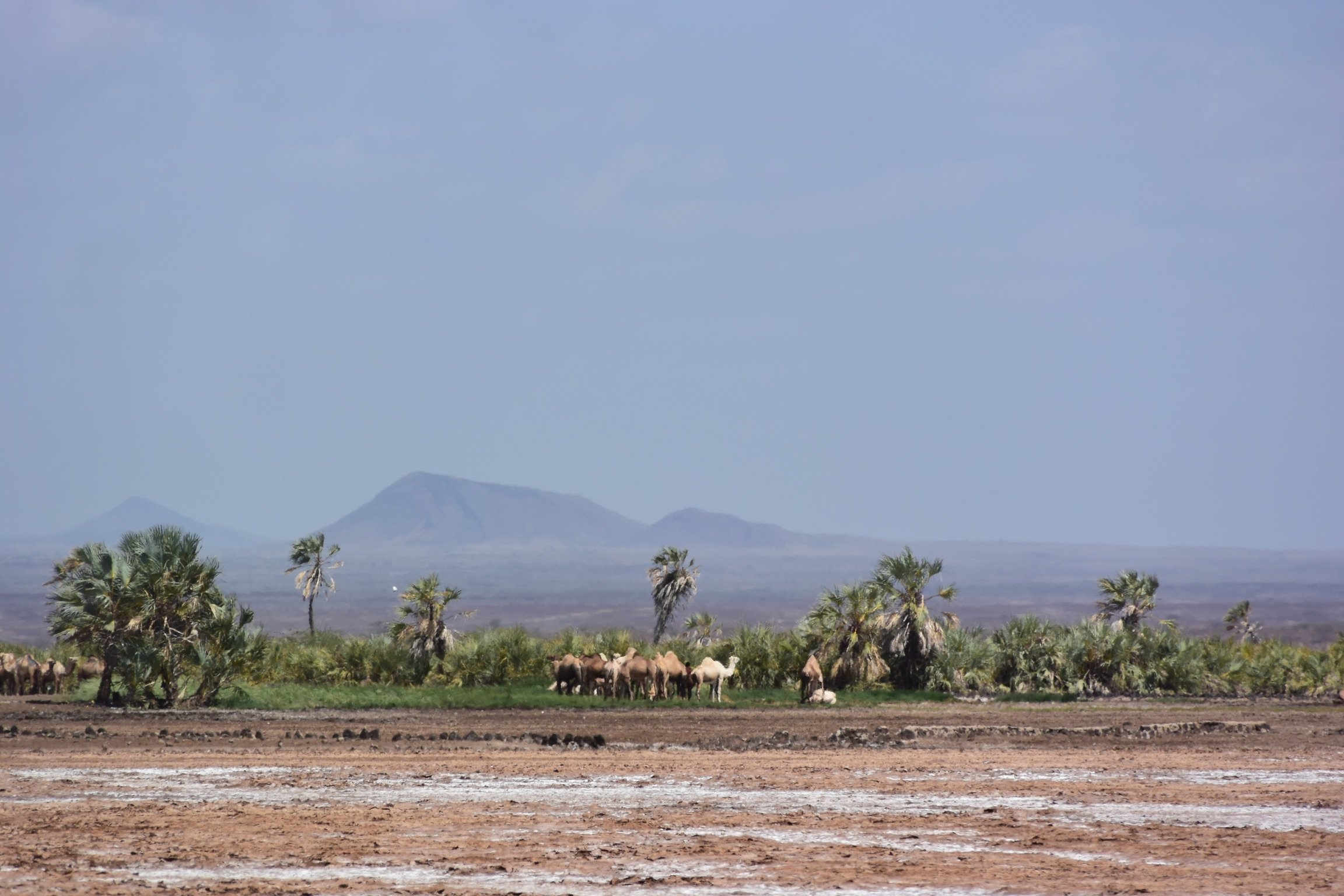Kalacha Reflection
by Dr. Nathaniel Robinson, Board Chair - Africa Exchange
Kalacha oasis, Chalbi Desert, Northern Kenya
I recently traveled with Sam, Mark, Simon, and a close friend to Kalacha, a small town on the edge of the Chalbi Desert in northern Kenya. Africa Exchange is currently developing three new ICDC sites there, and this visit held special meaning for me: Kalacha is where my father conducted his Ph.D. research. He documented the Gabra people’s oral history and ecological knowledge—insights that have enabled them to survive in environments many would consider impossibly harsh. During some of the most severe droughts of the 1970s and 1980s, the Gabra not only survived but thrived, even as neighboring communities and their livestock struggled.
My oldest sister spent her earliest years in this community, and throughout my childhood, we often made the long, dusty trek to Kalacha. My father led university field courses here, exposing students to these arid conditions and to a culture built around constant movement in search of water and pasture. From an early age, this taught me invaluable lessons about resilience, adaptation, and openness to change.
When we left Nairobi, I had few expectations for our journey north. Many parts of Kenya have grown and transformed at astonishing speeds—cities and towns turning into bustling hubs and fenced-off plots. But as we descended out of the central highlands into hotter, drier regions, beyond popular tourist destinations, I caught a glimpse of a more familiar Kenya. While the small centers and towns we passed were somewhat larger and busier than I remembered, they still felt rooted in local traditions rather than overrun by modern sprawl.
With paved roads and the ban on plastic bags, these centers felt cleaner than in the past. Between them, the dry scrublands appeared relatively intact, shielded by their remoteness from the agricultural transformations seen elsewhere. Driving through the rugged lava fields of northern Kenya and across the Chalbi Desert, I felt relief at seeing Kalacha largely recognizable. The tiny house where my parents lived in the late 1970s still stands, and the extensive Acacia tortilis woodlands remain, offering the same shade they did decades ago.
Despite this apparent timelessness, “progress” in other forms has reached the area. National policies and government services often marginalize nomadic pastoralists like the Gabra. Many still maintain mobile huts and settlements, but their ability to move freely is rapidly diminishing. Climate change compounds this challenge—erratic rainfall, harsher droughts, and sudden floods undermine the once-reliable cycles the Gabra have followed for generations. In my father’s more recent interactions, elders report they can no longer predict rains or droughts in the way they used to, eroding traditions and oral histories tied to seasonal rhythms.
Meanwhile, key resource areas once held in reserve for drought periods are increasingly settled by agriculturalists as land across Kenya becomes privatized. This trend is also impacting the Gabra as they try and farm the desert fringes around Kalacha. The process reduces the Gabra’s freedom to relocate and fundamentally challenges their way of life.
In this context, there’s a dilemma: do new ICDC sites unintentionally encourage permanent settlement, further eroding mobility? Or do they enhance the likelihood of improving livelihoods in a context where settlement is inevitable. Communities around Kalacha have already made the decision to settle. These are the places where Africa Exchange, in partnership with the Catholic Mission in Kalacha, the Northern Kenya Fund and the Marsabit County Education Dept., is working. Balancing the need for services with the preservation of traditional livelihoods is complex, but it’s also essential if we hope to support a resilient future for the Gabra and other pastoralist communities in the region.
Looking ahead, we believe that community-driven education can be a cornerstone for the Gabra’s future. While their traditional pastoralist lifestyle may be changing, an ICDC can serve as both a safeguard and a bridge—preserving cultural knowledge while providing practical tools for today’s realities. This approach acknowledges the challenges brought by shifting climates, policies, and settlement patterns, yet also honors the Gabra’s resilience and adaptability. Through collaboration with local leaders, we hope these centers will offer not just survival, but the foundation for children who in turn w create a vibrant and sustainable way forward for their communities—even as we lament the loss of certain traditions in this ever-evolving landscape.










